The peppermint plant is a fast-growing perennial with culinary and medicinal uses. This refreshingly cool peppery plant grows worldwide and is famous for its flavor-enhancing abilities and healing properties.
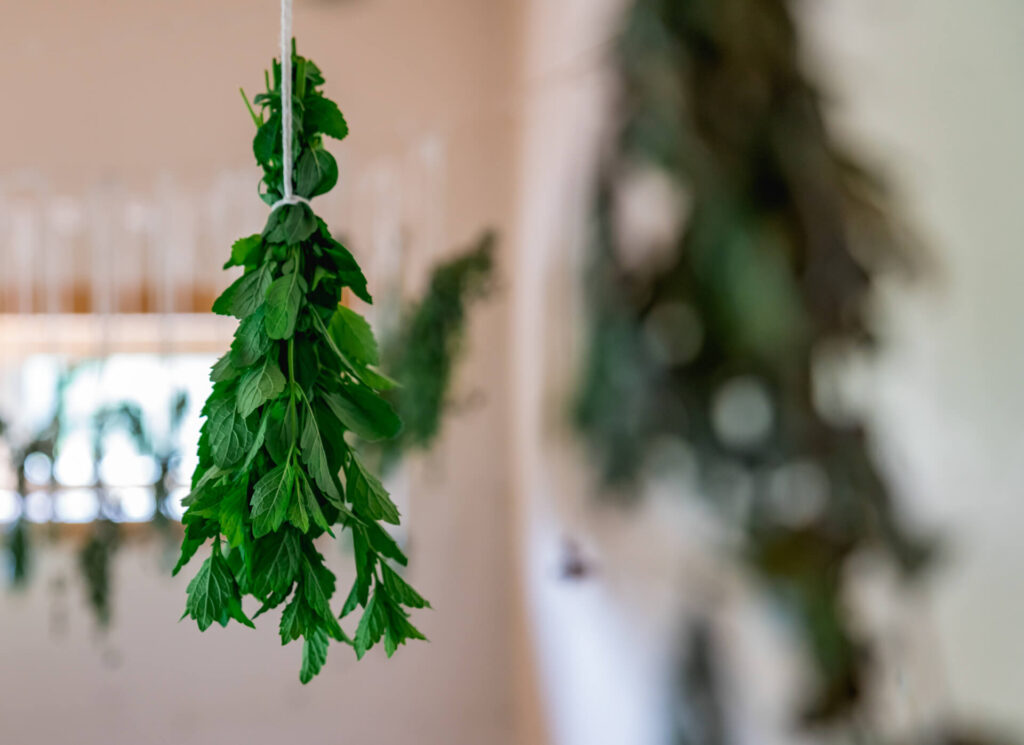
If you love mint, you should know that peppermint is easy to grow from seed. Read on to learn the health benefits, ways to use peppermint medicinally and for culinary purposes, and everything you need to know to grow, harvest, and preserve your peppermint plant.
Why I Love the Peppermint Plant
Peppermint (Mentha x piperita variegata) is an herbaceous perennial that spreads its roots, propagating rapidly throughout the garden. The versatility of peppermint for culinary use and medicinal benefits makes it one of my favorite 15 medicinal herbs to grow in my old-fashioned cottage garden.
Like the lemon balm plant, the health benefits and fragrance invite calm in the mind and body.
If you are interested in learning about medicinal herbs and their uses, peppermint is a great place to start with herbalism. Peppermint grows so prolifically that you must keep it contained to ensure it doesn’t take over the rest of your herb garden (unless you don’t mind it growing wild and unruly!).
With this advantage, it takes minimal effort to grow enough peppermint to provide an ample supply to stock your pantry and medicine cabinet each year.
It’s important to note that I am not a certified medical practitioner. This post is not intended to diagnose or treat but is for informational purposes only. Please contact your medical care professional before introducing new herbal remedies into your wellness routine.

Peppermint Varieties
Worldwide there are over 600 types of mint. The natural hybrid, peppermint, with its dark green leaves and pretty pinkish, purple flowers, grows wild throughout North America, Australia and Europe. Here are a few popular varieties of peppermint.
- Chocolate Mint – Chocolate mint (or Mentha piperita chocolate mint) is unique in that the blooms open from the bottom up and have the fragrance and flavor of chocolate and mint, like a peppermint patty!
- Lavender Mint – Mentha piperita lavendula (lavender mint) has beautiful light purple blooms with reddish stems and is a quick-growing ground cover. It livens up vegetables and meats when added as a culinary delight.
- Black Mitcham – Mentha x piperita (black mitcham) also hails as Todd’s Mitcham. It is a common variety often grown commercially and has beautiful violet-colored leaves and stems.
- Apple Mint – Mentha suaveolens (apple mint) is a culinary variety that’s great for teas and jellies. It has a fruity, minty flavor. The light green leaves and little white flowers make a lovely addition to the home garden.
- American Wild Mint – Mentha canadensis (American wild mint) is a native plant used in the kitchen to flavor teas, jellies, and candies.
- Spearmint – Mentha spicata (spearmint) is probably most well-known as a flavoring in chewing gum, but it is also delicious in teas and fresh garden salads.
- Lime Mint – Mentha piperita (lime mint) has a fresh lime scent and flavor with lovely bronze-green leaves.
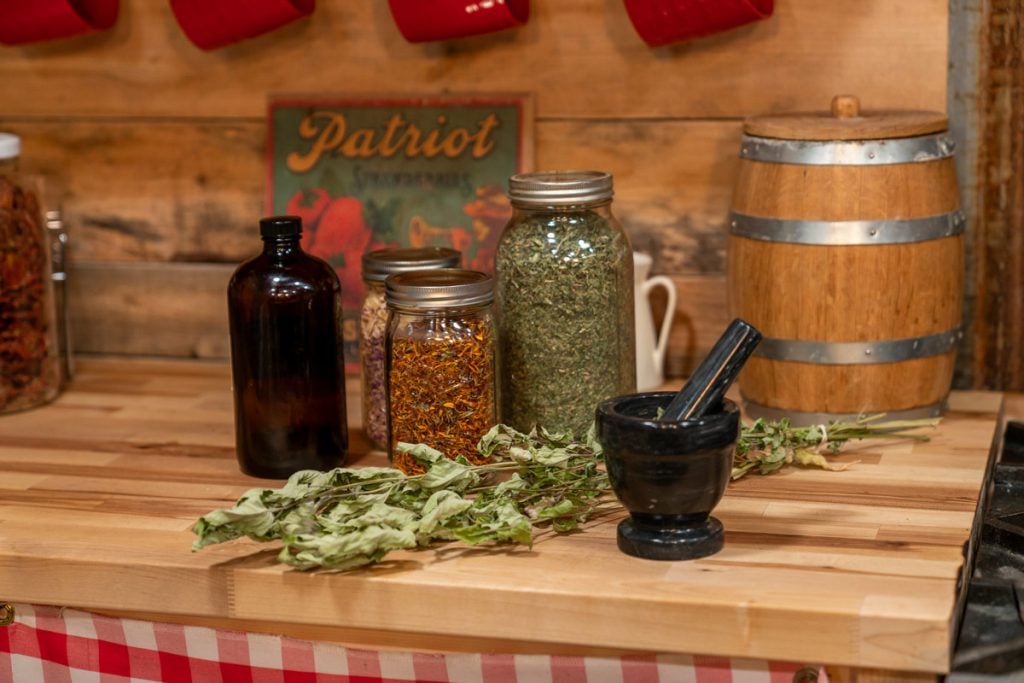
Health Benefits of Peppermint
While peppermint is delicious, it also has potent medicinal properties that help ease the symptoms of common ailments.
- Irritable Bowel Syndrome – The antispasmodic properties in peppermint helps relieve stomach cramping and flatulence associated with IBS. (Source)
- Upset Stomach – Peppermint aids digestion by helping food pass through the stomach more efficiently. (Source) It’s important to note that peppermint is not recommended if your upset stomach is due to acid reflux, as it will relax the muscles that keep stomach acid from rising, making your symptoms worse.
- Tension Headaches – Peppermint is known to relieve tension headaches, lower blood pressure, and relax the muscles in our bodies. The menthol increases blood flow providing a cooling sensation and reducing headache pain. (Source) That is why our homemade headache salve is made with peppermint.
- Dental Hygiene – The antibacterial properties in peppermint kills germs that cause plaque build-up. (Source) No wonder peppermint is used in toothpaste and mouthwashes to alleviate bad breath!
- Congestion and Sinus Pressure – The menthol in the peppermint helps open air passages and clear sinuses. (Source) Homesteading Hack: For an easy at-home remedy, put a few peppermint leaves or drops of peppermint essential oil in a bowl of hot water with a towel over your head and breathe in the vapors.
- Nausea – Peppermint gum has been used anecdotally as a cure for motion sickness, and nurses have found that adding peppermint essential oil to a cool washcloth helps ease nausea in chemotherapy patients more effectively than a cool washcloth alone. (Source)
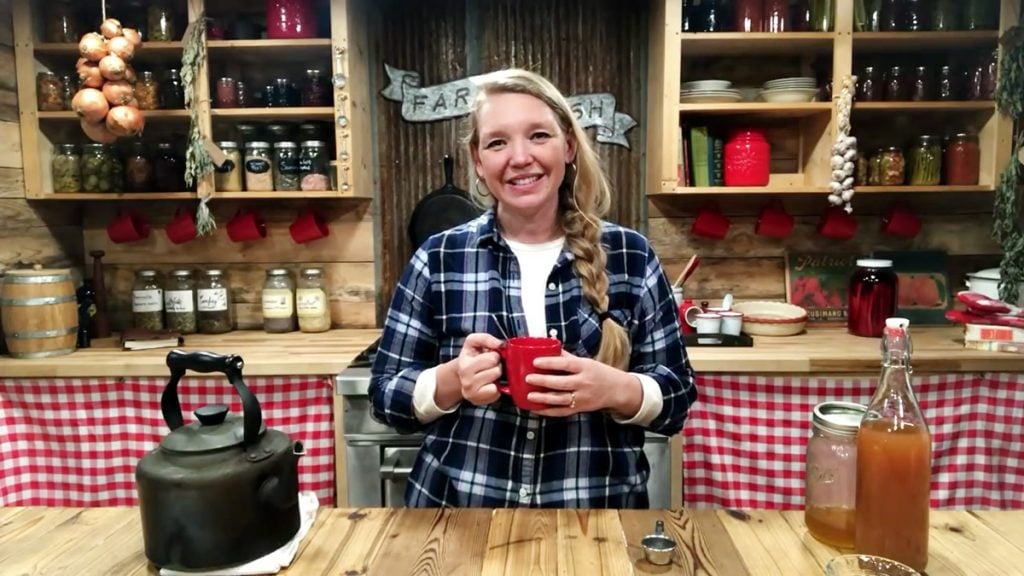
Ways to Prepare Peppermint for Medicinal Use
Peppermint may be considered a common culinary herb, but its antispasmatic, anti-inflammatory and stomachic properties are exceptional. Peppermint plants provide various uses for the natural medicine cabinet as well.
- Herbal Tea – The soothing benefits of peppermint tea as a homemade cough remedy or relief for an upset stomach are safe and effective for children and adults. We also enjoy making hops tea for some of the same benefits as peppermint tea, aiding digestive issues.
- Tinctures – You can use peppermint to make an herbal tincture to help heal various ailments, from bug bites and tension headaches to soothing a sore throat.
- Herbal Capsules – If you don’t enjoy the flavor of mint, you can make herbal capsules to aid in digestive ailments.
- Mouthwash – Using peppermint oil in homemade herbal mouthwash can support gum health and freshen your breath naturally.
- Toothpaste – Peppermint oil in homemade toothpaste supports oral health by preventing gingivitis and plaque from building on your teeth and gums. (Source)
- Salve – We add peppermint essential oil to our homemade arnica salve recipe making it practical for skin issues, muscle aches and pain relief.
- Shampoo – Peppermint oil added to shampoo can invigorate the scalp and calm the senses when shampooing your hair.

Ways to Prepare Peppermint for Culinary Use
Once you have your medicine cabinet covered, don’t forget to add peppermint to your well-stocked pantry!
- Baked Goods – Mint and chocolate go well together and are a popular combo during the holidays. Try adding peppermint extract to homemade chocolate brownies, chocolate cake, or chocolate-covered coconut truffles.
- Ice Cream – You can customize homemade vanilla ice cream in endless flavors. The cooling effect of peppermint in mint chip ice cream is especially welcome on a hot summer day.
- Ice Tea – A cold glass of instant herbal iced tea at the end of a long workday is calming and refreshing. We even like to add some peppermint leaves to regular brewed black tea for a refreshing mint twist.
- Kombucha – We make our kombucha recipe for its gut-healthy benefits instead of sugary sodas. Peppermint leaves add healthy intestinal anti-inflammatory properties and a cool and refreshing flavor.
- Salads – A few chopped peppermint leaves sprinkled in a garden or fruit salad add an exciting depth of flavor.
- Meats – Peppermint leaves complement a variety of proteins like lamb, poultry, fish and beef, adding a peppery bite.
- Vegetables – Carrots, potatoes, peas and green beans pair well with peppermint as a summery side dish.
- Herb Roasting Rub – My herb roasting rub is delicious on beef, lamb or pork roast. It’s easy to make and give as a gift in a holiday gift basket.
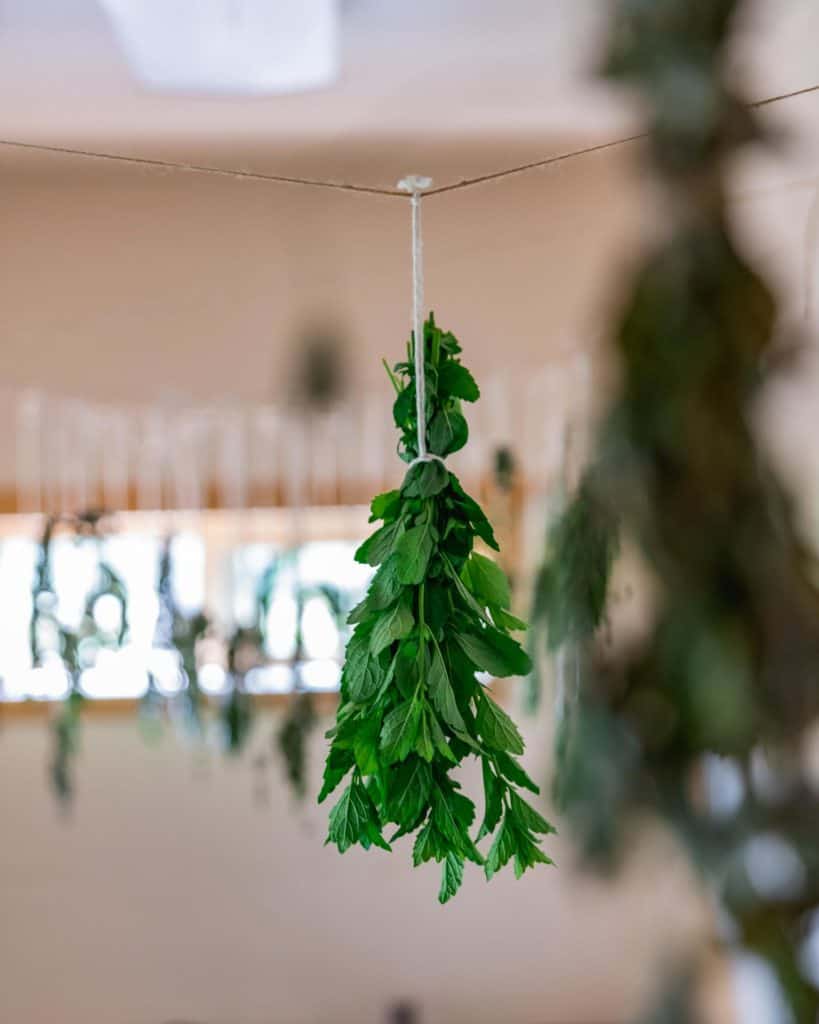
Growing Peppermint
This prolific plant does spread rapidly, and containing it is easy if you manage it right when you put it in the ground. You can also plant in a planter box or garden pot and grow inside your house next to a south-facing window.
The easiest way to grow and care for peppermint is by taking a cutting from an established plant. Remove the leaves from the bottom two inches of the stem, and place in a vase of water until roots grow to about 2 inches. Your cutting is now ready to be transplanted.
If you don’t have an established plant to propagate, you can plant peppermint from seed. For best results in planting anything from seed, first, learn how to read seed packets.

Planting
- Seeds – You can start your seeds indoors or direct sow ¼ inch deep after the last frost date in the spring. Keep the soil moist around the seeds and they should germinate within 7-14 days.
- Spacing – Space your transplanted seedlings or direct sow 18 to 24 inches apart. This hardy plant is known to spread and grow in most soils, so management is essential.
- Sun – Peppermint can tolerate partial shade but will grow best, producing the most potent medicinal properties, when grown in full sun (6-8 hours per day.)
- Soil – Peppermint prefers loamy, moist, but well-draining soil.
- Companion Planting – Peppermint can overgrow and choke out other plants. Still, it can help deter pest infestations when you plant mint in a container near carrots, brassicas, lettuce, tomatoes, and squash.
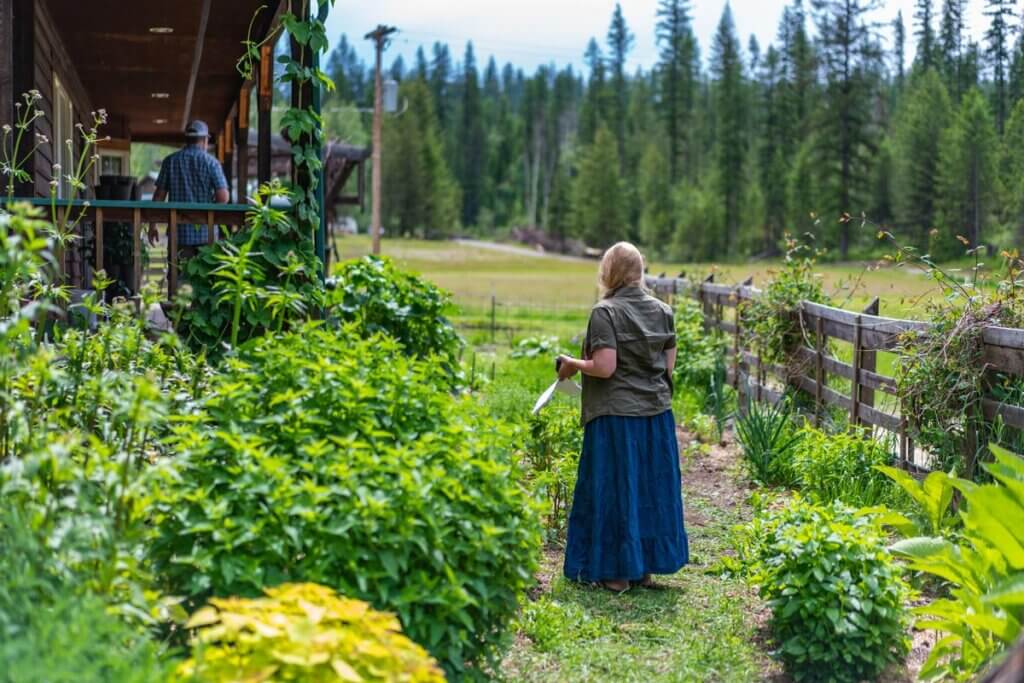
Growing
- Watering – Keeping the soil moist but not soggy is best for peppermint. Like most mint varieties, peppermint is susceptible to fungal disease. The most common are powdery mildew and rust, which is yellow, red or orange spots on the underside of leaves. Preventive measures like watering in the morning so the plant’s leaves can dry out during the day will keep it free of fungal disease. Cut out the infected areas so it doesn’t spread to the rest of the plant.
- Mulch – You can add mulch around your plants to help keep moisture in and the soil from becoming compacted.
- Fertilize – Peppermint is a high-nutrient feeder, so adding a side dressing of homemade compost or compost tea fertilizer a few times throughout the growing season will keep your soil from getting depleted.
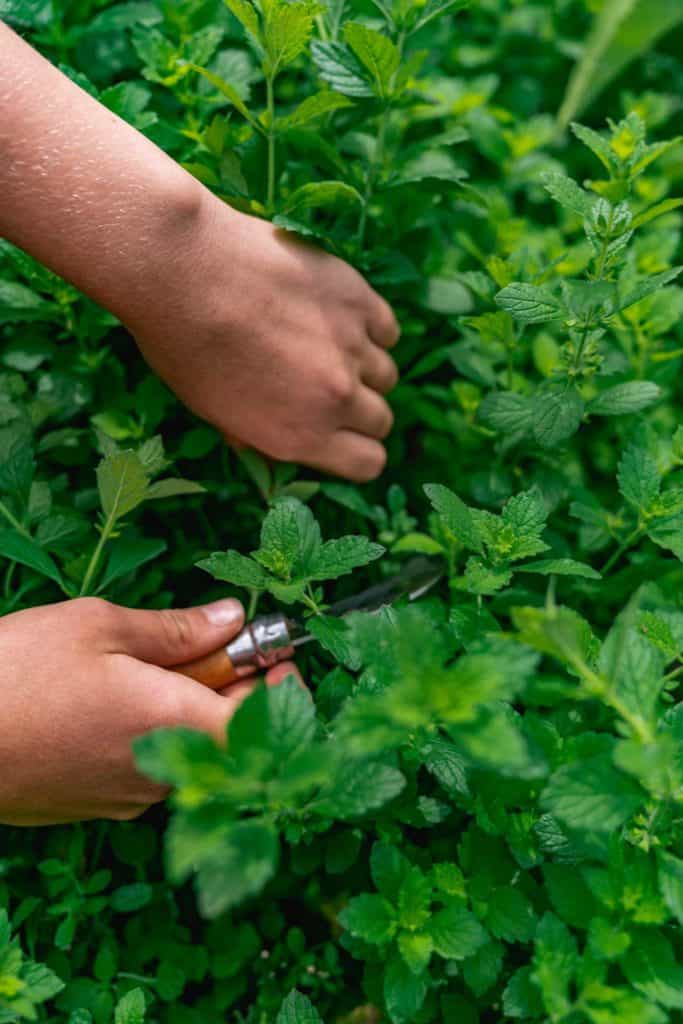
Harvesting
- Pinching Leaves – You can harvest your mint by pinching the leaves (large or small) off at the stem. The best time to reap a large batch for preservation or daily use is just before the plant blooms; the flavor will be at its most intense. A mature peppermint plant will provide three to four harvests during the summer and fall.
- Wintering Over – Peppermint is a perennial and will return year after year. Keeping it pruned and shaped will help it grow into a thick, bush-like plant. When it reaches 8 to 10 inches tall, cut it back by half its height each month of the growing season.
- Harvesting – At the end of the growing season, you can cut the plants all the way down to the base and harvest all the leaves.
- Storing – After harvesting your peppermint leaves, rinse them, pat them dry, and store them in a sealed container with a damp paper towel. If you harvest the entire stems of the peppermint, rinse them, pat them dry, place them in a cup with about ½ inch of water, and store them in the fridge. Homesteading Hack: A plastic bag placed over the leaves helps protect the leaves from drying out.

Preserving
There are a few different methods to preserve peppermint for later use.
- Dehydrating – Dehydrating peppermint won’t preserve the flavor as well but is suitable for encapsulation and tincture preparations. Learn how to dry fresh herbs here.
- Salt – Herbs preserved in salt are an ideal preservation method for recipes.
- Freezing – Freezing peppermint is a great way to preserve the flavor for infused water, kombucha, herbal teas and lemonade. Simply drop an ice cube into the drink of choice for a cool refreshing flavor boost. Follow this tutorial on freezing basil.
- Freeze-drying – Understanding the difference between freeze-drying and dehydrating peppermint is essential. When reconstituted, freeze-dried peppermint will have the flavor and texture of fresh. For culinary uses, this is our preferred method. However, we also dry our peppermint for herbal remedies and homemade peppermint tea.
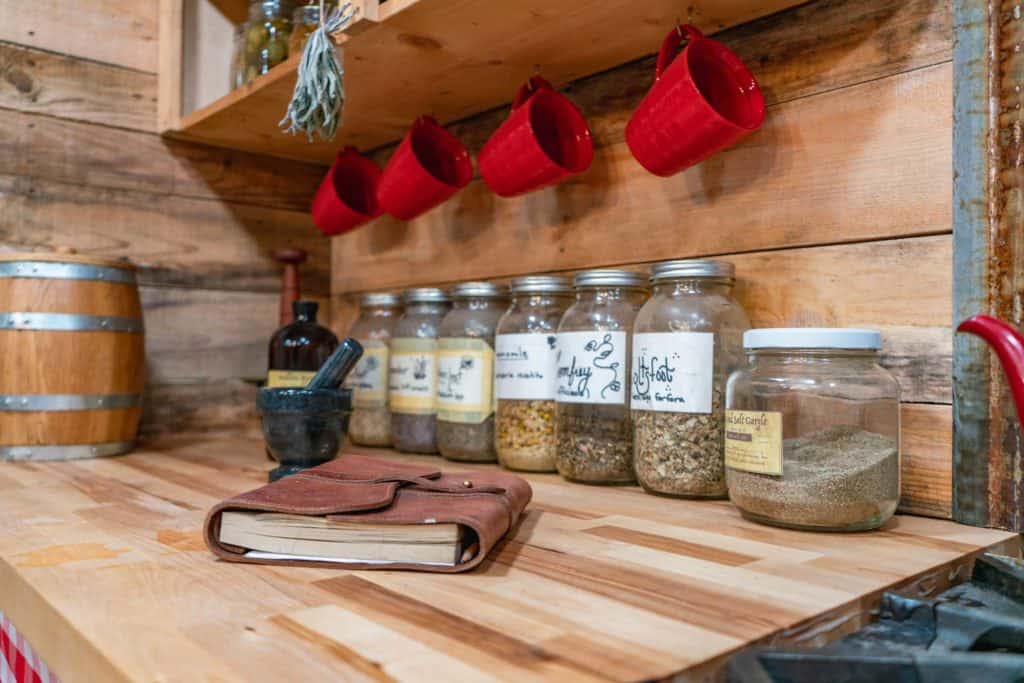
Using Herbal Medicine
Peppermint is an excellent choice when considering growing an herb that benefits your garden and health. If you are ready to learn more about double-duty herbs that can heal your family naturally, the Herbal Medicine Cabinet: Colds and Flu class is designed just for you.
In this masterclass, I have created a simple system that will allow you to confidently stock your herbal medicine cabinet using common herbs to safely, naturally and effectively treat your family this cold and flu season.
If you are ready to stop dabbling in herbal remedies and start healing your family this cold and flu season, sign up for instant access today!
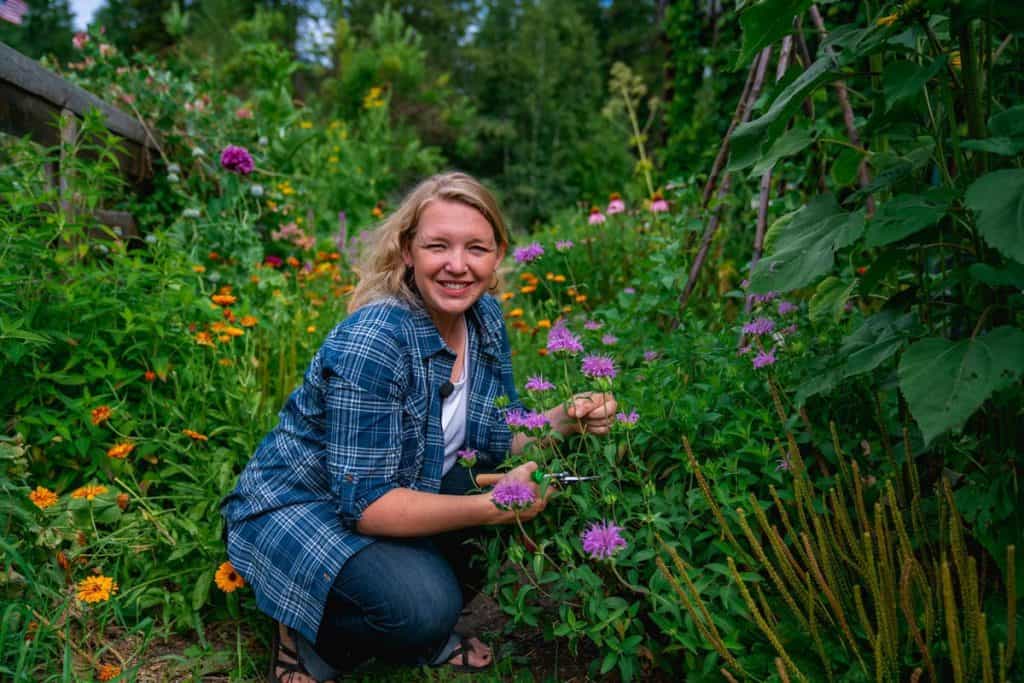
Other Articles You May Enjoy
- Designing an Old Fashioned Cottage Garden
- Medicinal Herbs & Their Uses
- 15 Medicinal Herbs to Grow & Their Common Uses
- How to Use Herbal Medicine Safely at Home
- Using Medicinal Herbs on Farm Animals
- How to Boost Your Immune System Naturally in 7 Simple Steps
- How to Start Using Medicinal Herbs
- Home Remedies For Cough (For Babies, Toddlers & Adults)
- Herbal Tinctures- How to Make Your Own
- Herb Capsules- How to Make Your Own
- Instant Herbal Iced Tea Recipe
- How to Dry Fresh Herbs (Oven, Dehydrator Or Hanging)
- Direct Primary Care – Going “Off-Grid” with Your Health Care


















